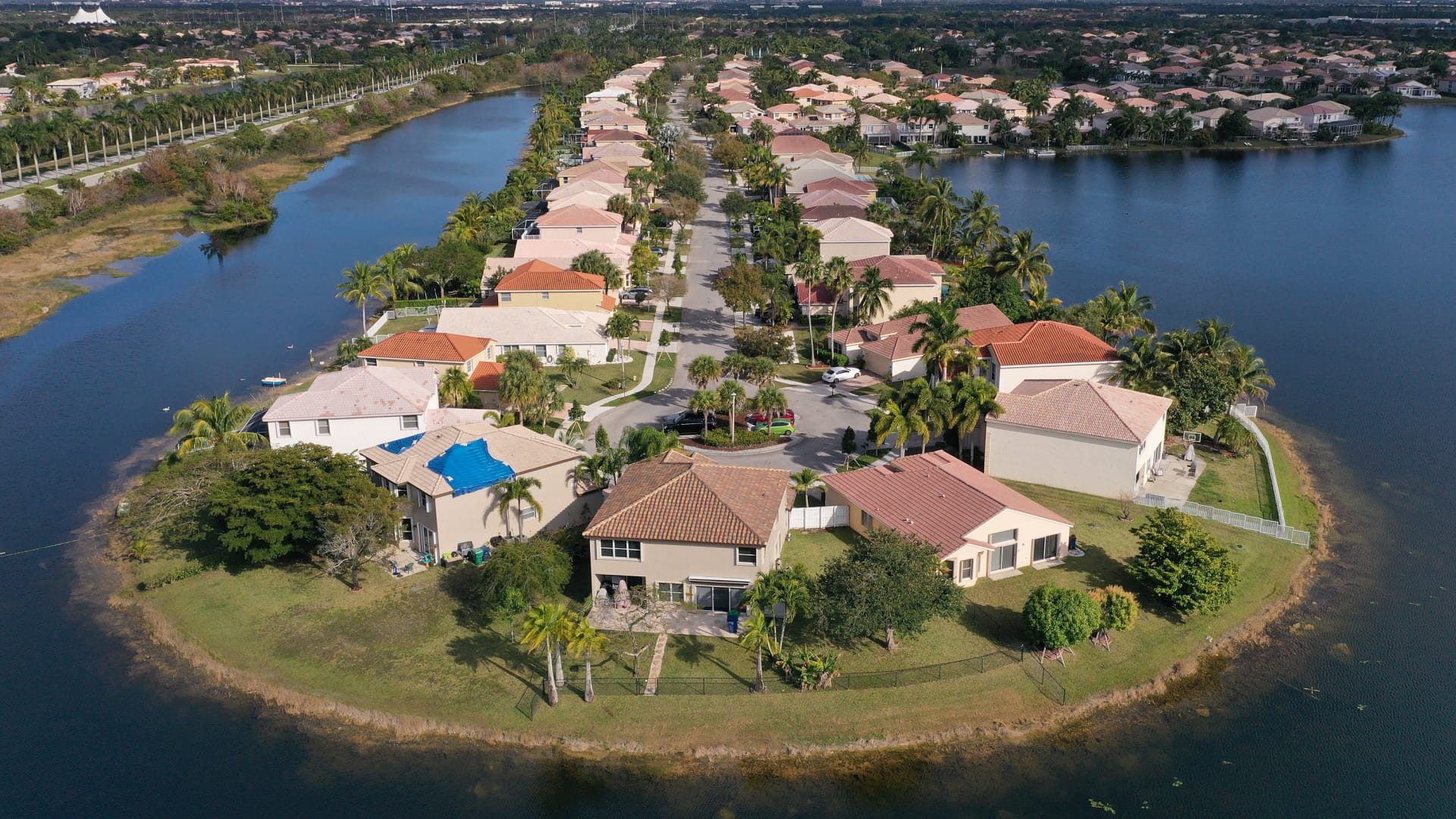The U.S. housing market cooled off pretty dramatically last year, after mortgage rates more than doubled from historic lows. Home prices, however, have been stickier.
Prices began falling last June, but are still higher than they were a year ago. Now, as demand appears to be coming back into the market, due to a slight drop in mortgage rates, prices are pushing back.
In December, the latest read, U.S. home prices were 6.9% higher year over year, according to CoreLogic. That was the lowest annual appreciation rate since the late summer of 2020. Last April, annual price appreciation hit a high of 20%.
Falling home prices were reflecting weaker housing demand, as inflation, job cuts and uncertainty in the economy piled onto the barrier put up by higher mortgage rates. But mortgage rates began to fall in December, and prices reacted immediately. The cooling continued, but not as much as in the months before.
“While prices continued to fall from November, the rate of decline was lower than that seen in the summer and still adds up to only a 3% cumulative drop in prices since last spring’s peak,” said Selma Hepp, chief economist at CoreLogic.
Hepp notes that some of the exurban areas that became popular during the first years of the pandemic and saw prices rise sharply are now seeing larger corrections. But she doesn’t expect that will last long.
“While price deceleration will likely persist into the spring of 2023, when the market will probably see some year-over-year declines, the recent decrease in mortgage rates has stimulated buyer demand and could result in a more optimistic homebuying season than many expected,” Hepp said.
A monthly survey of homebuying sentiment from Fannie Mae showed an increase in January for the third straight month. Consumers surveyed said they still expected to see prices either fall or flatten over the next year, but the share of those who think it’s a good time to sell a home increased to 59% from 51%.
Early spring market surge?
More inventory on the market would help bring more buyers back into the market. Anecdotally, real estate agents are reporting an earlier-than-usual surge in the spring market, with open houses seeing more foot traffic in the last few weeks. Some also reported the return of bidding wars.
The nation’s homebuilders are also reporting increased demand. Homebuilder sentiment in January rose for the first time in 12 months, the National Association of Home Builders said. Builders reported increases in current sales, buyer traffic and sales expectations over the next six months. Lower mortgage rates are driving the new demand.
“With mortgage rates anticipated to continue to trend lower later this year, affordability conditions are expected to improve, and this will increase demand and bring more buyers back into the market,” said NAHB chief economist Robert Dietz.
The NAHB’s home affordability index started this year at the lowest level since it began tracking the metric a decade ago. But lower rates are starting to turn that around.
If home prices continue to decline at the average rate they have over the past six months, annual home price growth could finally go negative sometime within the next three months, according to a new report from Black Knight. It now takes nearly $600 (+41%) more to make the monthly mortgage payment on the average priced home using a 20% down 30-year rate mortgage than at the same time last year.
Mortgage applications to purchase a home, the most current indicator of demand, rose throughout January and the first week of February, although it is still lower than the same period a year ago, when rates were nearly half what they are now.
“We can see definite signs of a January uptick in purchase lending on lower rates and somewhat lower home prices,” said Ben Graboske, president of Black Knight Data and Analytics. “But affordability still has a stranglehold on much of the market.”
